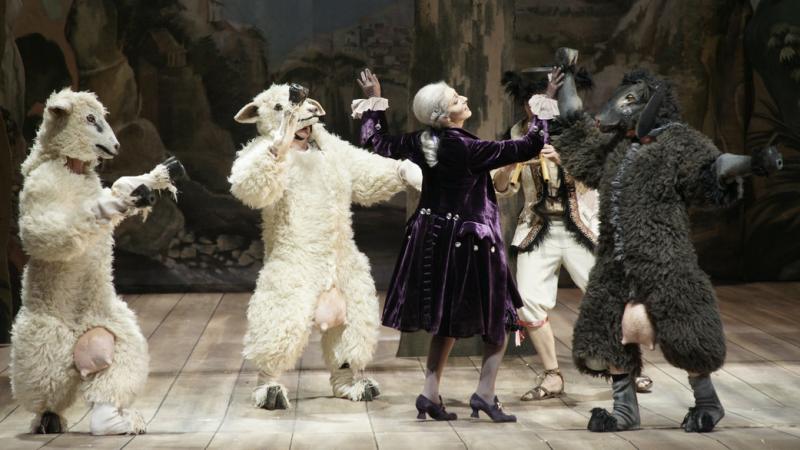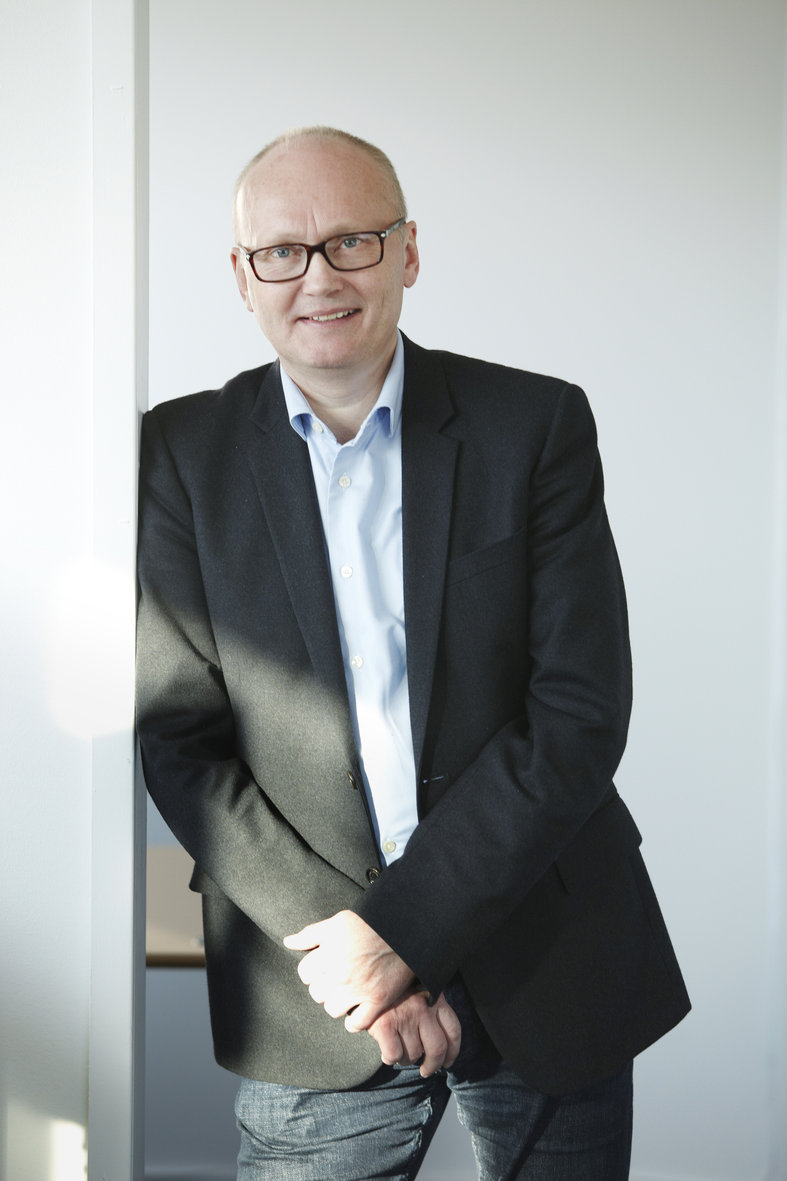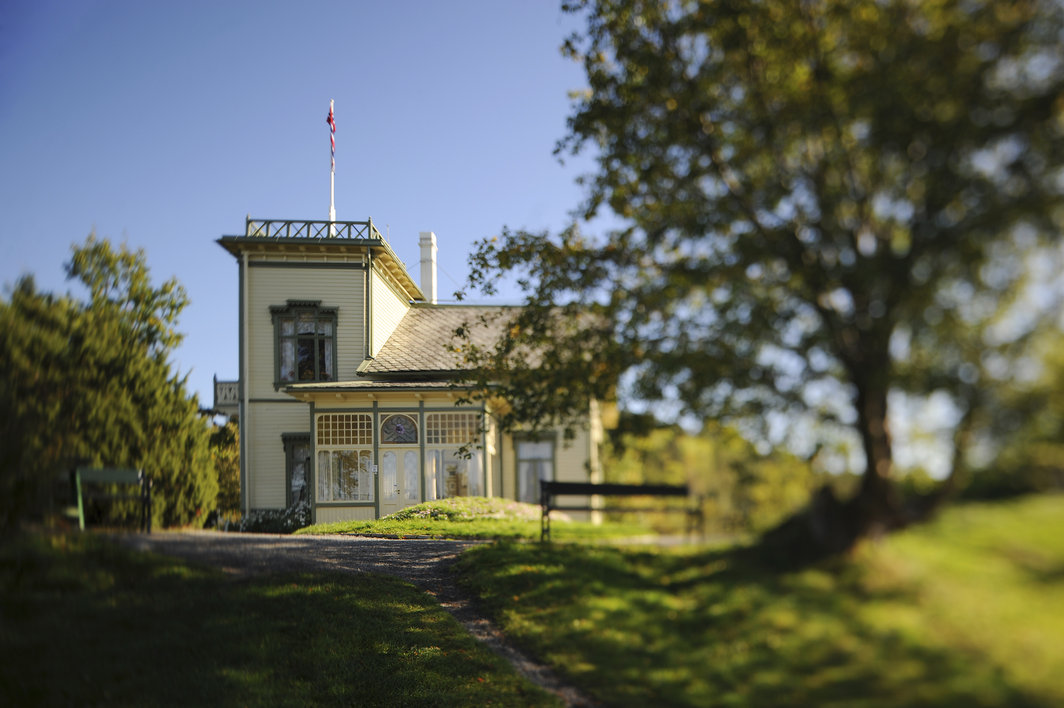theartsdesk in Bergen: Sunny Festival in the City of Rain | reviews, news & interviews
theartsdesk in Bergen: Sunny Festival in the City of Rain
theartsdesk in Bergen: Sunny Festival in the City of Rain
Irreverent Handel and serious Beethoven make for a heady combination

“Bergen is the most beautiful city in the world when it doesn’t rain,” said one Norwegian to me. There was a pause. “It always rains in Bergen.” Mention Norway’s second city to anyone and the first reaction is always the same. They don’t describe the UNESCO World Heritage Site that is the quayside Bryggen quarter, nor the city’s astonishing outlook – caught between mountains and sea – nor even the annual Bergen International Festival, the largest festival of its kind in the Nordic countries.
Not without good reason have Norwegians nicknamed Bergen the City of Rain. A few years ago it endured an exceedingly soggy 85 consecutive days of rainfall, and Bergen enjoys annual precipitation of somewhere around 88 inches – damp even by English standards. But while a heatwave in Bergen sounds like the punchline to a joke, it’s exactly what this year’s 60th Bergen International Festival has been enjoying for the past week, with the sunshine enduring long into the night, in true Scandinavian fashion.
Handel’s opera is barely recognisable under the rubble of cross-dressing, meta-theatrical, multi-lingual by-play
With people filling the sunny streets the festival is suddenly everywhere. The open-air exhibition finds itself soundtracked one afternoon by the music of the Venezuelan Brass Ensemble, performing in a nearby street; audiences spill out of the Grieghallen during concert intervals, filling the square with music-talk, and during the day instrument cases are propped up against the tables as their owners sit in cafes between rehearsals.
Anders Beyer (pictured below), who takes over from Per Boye Hansen next year as the festival’s artistic director, speaks of a Norwegian word – untranslatable, of course – that expresses the nation’s particular sense of community. It’s palpable in the daily life of the festival, but more importantly also forms a key part of the philosophy that structures and underpins the event.
 “People tell me that they don’t necessarily come to Bergen to enjoy the international soloists they can hear in London or New York throughout the year. What interests them is the particular identity of Bergen itself – the way that we use art, the way our democracy supports and stimulates it. The folk-culture, the choral tradition, the accordion in the countryside – all of that defines the Nordic mind-set. That is interesting to me, not podium culture with its touring stars. We want people to meet the festival in the streets, not just the concert hall.”
“People tell me that they don’t necessarily come to Bergen to enjoy the international soloists they can hear in London or New York throughout the year. What interests them is the particular identity of Bergen itself – the way that we use art, the way our democracy supports and stimulates it. The folk-culture, the choral tradition, the accordion in the countryside – all of that defines the Nordic mind-set. That is interesting to me, not podium culture with its touring stars. We want people to meet the festival in the streets, not just the concert hall.”
While Beyer’s particular vision will begin to emerge next year in a season themed loosely around “Women, Water and Wonderland”, 2012 has been the final year under Hansen’s direction – an eclectic mix of music, theatre, dance and film that brings Bryn Terfel, Les Arts Florissants, Berlin’s Komische Opera and Norway’s own Leif Ove Andsnes together for two weeks of cultural celebration that Beyer terms the “crown jewels” of Norway’s artistic scene.
This season opened in appropriately sunny style with possibly the most irreverent and playful take on a Handel opera Europe will see this year. Hailing (of course) from Berlin’s Komische Opera, Xerxes is the curdled pastoral fantasy of Norway’s own precocious Stefan Herheim, whose densely visual, multimedia productions are beginning to trumpet his skill internationally.
Given the weight of a Parsifal or even a Rhinegold to kick against, Herheim’s wilder conceptual punches are absorbed, tempered. But given a flimsy opera seria, complete with fervent love aria to a tree and more than usual quantities of implausible romantic entanglement, there’s a real danger of the work’s very structure collapsing under the weight of the director’s intent.
In practice the result is indeed something of a collapse; Handel’s opera is barely recognisable under the rubble of cross-dressing, meta-theatrical, multi-lingual by-play, but let go of any devotion to the opera as we know and love it, and there’s plenty of pleasure to be found among the smashed fragments of authenticity.
 We might open in the gilded-and-corniced 18th century, but to all intents and purposes we’re back in the early 1990s, complete with broken fourth wall, play-within-a-play and lots of rather self-conscious looking back at the audience. Herheim’s Xerxes is staged as the latest production in repertory at a German theatre, with the Persian king and his brother recast as adoring suitors to leading lady Romilda. As we move through the plot characters slip in and out of their stage roles (helpfully, if rather clunkily, signposted by language – German for diagetic exchanges and Italian for non-diagetic aria showpieces), blurring divides until the final chorus when costumes are set aside and the singers emerge in their own contemporary clothes.
We might open in the gilded-and-corniced 18th century, but to all intents and purposes we’re back in the early 1990s, complete with broken fourth wall, play-within-a-play and lots of rather self-conscious looking back at the audience. Herheim’s Xerxes is staged as the latest production in repertory at a German theatre, with the Persian king and his brother recast as adoring suitors to leading lady Romilda. As we move through the plot characters slip in and out of their stage roles (helpfully, if rather clunkily, signposted by language – German for diagetic exchanges and Italian for non-diagetic aria showpieces), blurring divides until the final chorus when costumes are set aside and the singers emerge in their own contemporary clothes.
While the constant insistence on this conceit gets a bit weary by the end (even conductor and orchestra get in on the meta-action), by sheer energy and single-minded determination Herheim manages to make it work. It helps that the show never takes itself too seriously. Whole swathes of da capo and recitative are jettisoned, some creative transposing and re-orchestrating assists the flow action, and Haden Matzeit’s Elviro (pictured above) almost steals the show with extended passages of falsetto. Add to this some over-sized (and over-sexed) sheep, Gesine Vollm’s outrageous “period” costumes, and a chorus of sea-creatures, and it would take a stern purist not to crack a smile.
Unfortunately conductor Konrad Junghanel doesn’t share Herheim’s lightness of touch, kicking things off with an “Ombra mai fu” so slow as to induce real panic that we might never get beyond it. The pace did pick up into Act II ( “Un cenno leggiadretto" was almost sprightly), but never quite shrugged off a sense of weight. The orchestra of the Komische Opera however manage make a virtue of their non-period forces, and if onstage action is pure 1990s, then the accompaniment is all 1980s swoops and sighing rallentandos.
In the current operatic climate of meticulous authenticity there’s a lot to be said for Herheim’s dramatic contraflow
To have no countertenor among a cast of five upper-voiced principals often leads to soprano fatigue, but the Komische Opera here fields an impressively varied and dynamic collection of voices. Chief among these is Serbian mezzo Katarina Bradic, whose turn as Xerxes’s abandoned fiancée Amastris was unmatched, dominating both physically and vocally to an extent that almost threw off the power dynamics of the piece. Oak-dark tone and impressively articulated coloratura transformed this into a feminist parable, and made one yearn to see her in a bigger role.
Soprano Stella Doufexis’s Xerxes was neat and witty in delivery, sparring believably with Karolina Gumos’s Aramenes (a rare emotive performance in a drama played for laughs) and sparking with Brigitte Geller’s giddy Romilda, but none could outdo the poised vocal slapstick of Matzeit, whose flower-seller was only equalled for excess by designer Heike Scheele’s final heavenly tableau.
 In the current operatic climate of meticulous research and authenticity at all costs there’s a lot to be said for Herheim’s dramatic contraflow. Yes it’s overdone, and at well over three hours tries the patience, but the playful spirit at work here that marries ornamentation and dramatic intention, that relates music to action so deftly, seems more in tune with Handel’s opera than many more laboriously correct stagings.
In the current operatic climate of meticulous research and authenticity at all costs there’s a lot to be said for Herheim’s dramatic contraflow. Yes it’s overdone, and at well over three hours tries the patience, but the playful spirit at work here that marries ornamentation and dramatic intention, that relates music to action so deftly, seems more in tune with Handel’s opera than many more laboriously correct stagings.
Norway’s classical music scene wouldn’t be what it is without Grieg. The composer who almost singlehandedly invented Norwegian musical nationalism (despite his Scottish heritage) is a regular fixture in the festival’s programming, and even when absent from the concert hall his legacy is still present in the festival venue of Troldhaugen. The summer home of Grieg and his wife Nina, Troldhaugen (pictured above) itself is preserved almost as it was on the death of the composer, complete with grand piano and family trinkets. Perched on the edge of a cliff, seemingly at the end of the world, it’s hard to look out at Grieg’s view and not feel excited to return to the sonatas, the Piano Concerto, and yes, even to Peer Gynt.
 But Norway’s classical tradition is also very much a living concern, as a concert from Bergen’s own adopted son Leif Ove Andsnes (pictured right) proved. A sell-out hall welcomed back Norway’s greatest cultural export to inaugurate the new Steinway recently purchased for Bergen’s Philharmonic Orchestra. Bright and glossily brilliant in tone, the piano is a natural fit for Andsnes’s own technique, its colours silhouetted against the altogether woodier, darker shades of the Mahler Chamber Orchestra.
But Norway’s classical tradition is also very much a living concern, as a concert from Bergen’s own adopted son Leif Ove Andsnes (pictured right) proved. A sell-out hall welcomed back Norway’s greatest cultural export to inaugurate the new Steinway recently purchased for Bergen’s Philharmonic Orchestra. Bright and glossily brilliant in tone, the piano is a natural fit for Andsnes’s own technique, its colours silhouetted against the altogether woodier, darker shades of the Mahler Chamber Orchestra.
Performing as both conductor and soloist, Andsnes led his regular collaborators in Beethoven’s First and Third Piano Concertos, leaving them under the direction of Concertmaster Steven Copes for Stravinsky’s Apollo musagète. The recording sessions Andsnes and the orchestra have just completed have created a gelled, natural partnership that needs little from Andsnes apart from the occasional turn as traffic cop. The ensemble’s vivid energy is balanced by their control, and although characterful the opposition between soloist and tutti in the First Piano Concerto was never less than poised.
Languorous and unashamedly ribald by turns, Stravinsky’s ballet score leapt into far-from-classical life
It’s poise that comes close to undermining Andsnes at times, colouring not only his pristine technique but his interpretation. Pitted against the orchestra for Concerto No 1 his drawing-room elegance made dramatic sense, yet in No 3 where an altogether more feral, devil-may-care spirit must inhabit Beethoven’s C minor there still lingered too much of the Biedermeier about proceedings.
There was nothing polite about the Stravinsky however. Languorous and unashamedly ribald by turns, Stravinsky’s ballet score leapt into far-from-classical life in the strings of the MCO. While the variations found them witty and Copes’s own solo brought new gravitas to the deity, it was the ecstatic Apothéose that saw the orchestra at their finest. Bows dug deep into strings, reaching for for block chords that physically forced their way into the hall, knocking air out of you before suddenly releasing the bloom of their tone.
Eclectic and appealing, balancing some seriously edgy modernism alongside the historical, both Bergen and its festival are at the high water mark of Norwegian cultural life. Per Boye Hansen’s philosophy has elevated the festival internationally, securing its place in European cultural dialogue, as this year’s starry line-up so clearly shows. Under Beyer a new journey beckons this international audience, inviting them not only to visit Bergen and its wharves and scenic funicular, but to inhabit it for a time – embracing not only culture but a way of life.
Buy
Explore topics
Share this article
The future of Arts Journalism
You can stop theartsdesk.com closing!
We urgently need financing to survive. Our fundraising drive has thus far raised £49,000 but we need to reach £100,000 or we will be forced to close. Please contribute here: https://gofund.me/c3f6033d
And if you can forward this information to anyone who might assist, we’d be grateful.

Subscribe to theartsdesk.com
Thank you for continuing to read our work on theartsdesk.com. For unlimited access to every article in its entirety, including our archive of more than 15,000 pieces, we're asking for £5 per month or £40 per year. We feel it's a very good deal, and hope you do too.
To take a subscription now simply click here.
And if you're looking for that extra gift for a friend or family member, why not treat them to a theartsdesk.com gift subscription?
more Classical music
 BBC Proms: Ehnes, Sinfonia of London, Wilson review - aspects of love
Sensuous Ravel, and bittersweet Bernstein, on an amorous evening
BBC Proms: Ehnes, Sinfonia of London, Wilson review - aspects of love
Sensuous Ravel, and bittersweet Bernstein, on an amorous evening
 Presteigne Festival 2025 review - new music is centre stage in the Welsh Marches
Music by 30 living composers, with Eleanor Alberga topping the bill
Presteigne Festival 2025 review - new music is centre stage in the Welsh Marches
Music by 30 living composers, with Eleanor Alberga topping the bill
 Lammermuir Festival 2025 review - music with soul from the heart of East Lothian
Baroque splendour, and chamber-ensemble drama, amid history-haunted lands
Lammermuir Festival 2025 review - music with soul from the heart of East Lothian
Baroque splendour, and chamber-ensemble drama, amid history-haunted lands
 BBC Proms: Steinbacher, RPO, Petrenko / Sternath, BBCSO, Oramo review - double-bill mixed bag
Young pianist shines in Grieg but Bliss’s portentous cantata disappoints
BBC Proms: Steinbacher, RPO, Petrenko / Sternath, BBCSO, Oramo review - double-bill mixed bag
Young pianist shines in Grieg but Bliss’s portentous cantata disappoints
 theartsdesk at the Lahti Sibelius Festival - early epics by the Finnish master in context
Finnish heroes meet their Austro-German counterparts in breathtaking interpretations
theartsdesk at the Lahti Sibelius Festival - early epics by the Finnish master in context
Finnish heroes meet their Austro-German counterparts in breathtaking interpretations
 Classical CDs: Sleigh rides, pancakes and cigars
Two big boxes, plus new music for brass and a pair of clarinet concertos
Classical CDs: Sleigh rides, pancakes and cigars
Two big boxes, plus new music for brass and a pair of clarinet concertos
 Waley-Cohen, Manchester Camerata, Pether, Whitworth Art Gallery, Manchester review - premiere of no ordinary violin concerto
Images of maternal care inspired by Hepworth and played in a gallery setting
Waley-Cohen, Manchester Camerata, Pether, Whitworth Art Gallery, Manchester review - premiere of no ordinary violin concerto
Images of maternal care inspired by Hepworth and played in a gallery setting
 BBC Proms: Barruk, Norwegian Chamber Orchestra, Kuusisto review - vague incantations, precise laments
First-half mix of Sámi songs and string things falters, but Shostakovich scours the soul
BBC Proms: Barruk, Norwegian Chamber Orchestra, Kuusisto review - vague incantations, precise laments
First-half mix of Sámi songs and string things falters, but Shostakovich scours the soul
 BBC Proms: Alexander’s Feast, Irish Baroque Orchestra, Whelan review - rapturous Handel fills the space
Pure joy, with a touch of introspection, from a great ensemble and three superb soloists
BBC Proms: Alexander’s Feast, Irish Baroque Orchestra, Whelan review - rapturous Handel fills the space
Pure joy, with a touch of introspection, from a great ensemble and three superb soloists
 BBC Proms: Moore, LSO, Bancroft review - the freshness of morning wind and brass
English concert band music...and an outlier
BBC Proms: Moore, LSO, Bancroft review - the freshness of morning wind and brass
English concert band music...and an outlier
 Willis-Sørensen, Ukrainian Freedom Orchestra, Wilson, Cadogan Hall review - romantic resilience
Passion, and polish, from Kyiv's musical warriors
Willis-Sørensen, Ukrainian Freedom Orchestra, Wilson, Cadogan Hall review - romantic resilience
Passion, and polish, from Kyiv's musical warriors
 BBC Proms: Faust, Gewandhausorchester Leipzig, Nelsons review - grace, then grandeur
A great fiddler lightens a dense orchestral palette
BBC Proms: Faust, Gewandhausorchester Leipzig, Nelsons review - grace, then grandeur
A great fiddler lightens a dense orchestral palette

Add comment